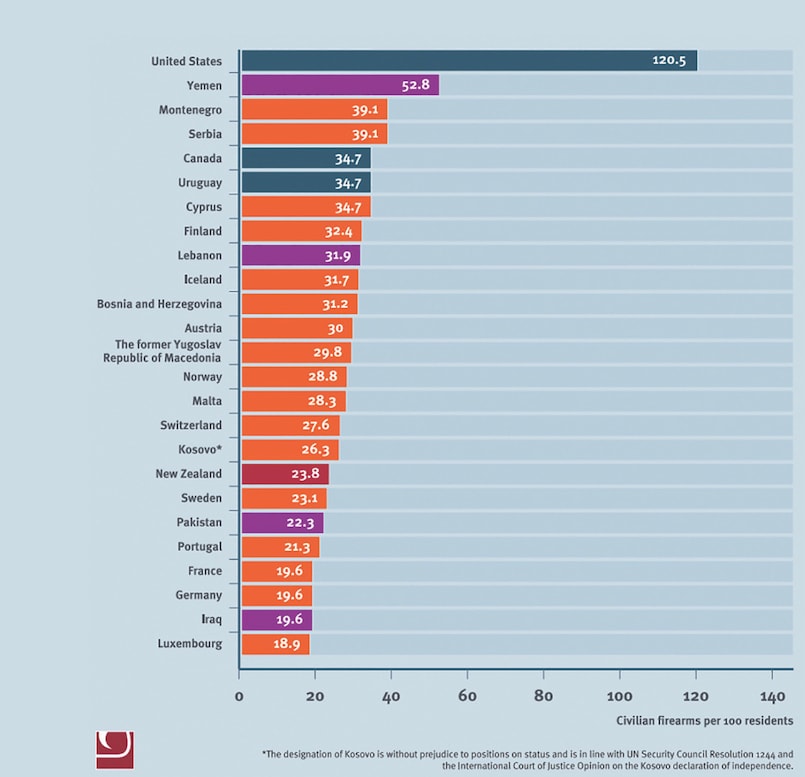
Rohit Khanna
When Princeton professor Uwe Reinhardt and Johns Hopkins professor Gerard Anderson published their landmark article, “It’s the Prices, Stupid” in 2003, we learned something that we had always suspected: the US spends more on healthcare than any other country, even though it is below the OECD median on the actual use of most measures of health services.
And from this remarkably rudimentary observation Reinhardt and Anderson taught us an important and obvious lesson: we cannot look at just one side of the equation if we wish to understand the whole issue.
And so, by extension, the logic seems similar. Gun violence in the US cannot be framed as a singular issue alone. We know it is a multi- factorial public health issue that has roots in mental illness and a pervasive culture of violence, along with lax gun legislation that allows access to these weapons with surprising ease.
But at some point, we also have to call a spade, a spade and acknowledge a primary point in the debate: the United States of America has more guns than people (see figure 1). The prevalence of gun ownership in the US is staggering and sits at more than twice that of the next-closest country.

For those less-than-familiar with the maddening intricacies of the US gun debate, there are two other points that continue to provide observers with so much discomfort around gun violence in the US: why is there such little public health research on the topic and why do Americans resist giving up guns so much?
The first one is actually simpler to answer. In 1996, the US congress passed the Dickey Amendment which was, effectively, a response to the Centers for Disease Control and Prevention’s (CDC) ongoing efforts to study the impact of gun violence in America.
The National Rifle Association (NRA) accused the CDC of being biased against gun ownership and, ultimately, lobbied for a remedy to this situation. This gave rise to the aforementioned Dickey Amendment which was a provision added to a 1996 spending bill that stated: ‘None of the funds made available in this title may be used, in whole or in part, to advocate or promote gun control.’
So that’s a secondary point. To be fair, as Rostron states in his legal dissection of the amendment: ‘The restriction’s meaning was debatable. The provision prohibits using funds to advocate or promote gun control, so it could be reasonably interpreted as placing no limit on research about gun violence and its causes, as long as the funded studies stopped short of calling for the enactment of specific legislative proposals that would restrict access to firearms.’¹
Nevertheless, meaningful research has never flourished and, in large part, this is due to the Dickey Amendment.
Do people feel strongly about the 2nd Amendment of the US Constitution? Of course they do. Very few of us want our government telling us what to do. But on the third point, the resistance against giving up guns is perhaps better understood through the lens of a behavioural economist. And even best understood through the concept of loss aversion.
Kahneman and Tversky described this seminal concept in the late ‘70s and boiled it down to the idea that ‘losses loom larger than gains’. Basically, once you have something, you are unwilling to give it up.
To suggest that loss aversion is the only reason that Americans don’t want to give up their guns would be a fallacy. It is a big part of the reason but there are gun owners in other countries who have given up guns through government-initiated gun buyback programmes and the results have been remarkable, with firearm suicide and homicide rates declining by 74% and 50% respectively.
So, it can’t just be a loss aversion issue. It is likely a hybrid between not wanting to give up a right that you have been constitutionally afforded along with some element of loss aversion that contributes to this American stubbornness.
To be sure, the number of guns that people own, along with limits on public health research as well as an unwillingness to give up what
one has gained are all important drivers of the gun violence and the gun debate in the US. And if we can understand these three points,
we are truly looking at the whole equation.




